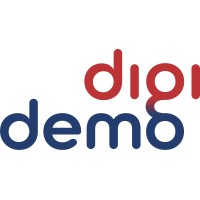
In this article, DigiDemo team member Lasse Christiansen, lecturer at UCN and postdoc at Aalborg University, gives further insights into the theoretical aspects and considerations behind using demonstrators in teaching.
A way to activate and demonstrate knowledge
Over the last decades, the technical development in industry has intensified the need for a more cross-disciplinary approach within education. However, teaching has traditionally taken place in a mono-disciplinary setting at educational institutions. Consequently, there is a need to change the educational approach to ensure a stronger focus on the cross-disciplinary aspects. One such approach is the use of demonstrators. ‘Using demonstrators, taking a point of departure in practice, creates a natural cross-disciplinary setting for teaching. The different perspectives embedded in the demonstrator create a natural setting for cross-disciplinary activities.’, Lasse says. And he continues: ‘However, the use of demonstrators anchored in practice also creates an opportunity to activate the students’ prior knowledge.’. Merrill (2002) has operationalized the learning process, taking a point of departure in tasks linked to practice, into four steps: (1) the activation of prior knowledge, (2) the demonstration of new knowledge, (3) the application of the new knowledge, and (4) the implementation of the new knowledge in practice. ‘These principles can be used as inspiration to underpin the integration of demonstrators in teaching activities.’, Lasse explains. The use of demonstrators is, accordingly, not only anchored in a technical perspective, with the aim of demonstrating new technology and functionality. It is also anchored in a pedagogical and didactic theoretical foundation.
Time and room for reflection
However, to ensure learning, the students must be given both time and room for reflection. Connecting new and existing knowledge is a reflective process (Rutting et al., 2016), which is not necessarily occur by itself. RPL (Reflective Practice-based Learning), developed at UCN, consists of six core principles that can aid to ensure relevance and relatability to a learning activity. ‘These principles may serve as a pedagogical guideline in designing educational activities.’, Lasse explains. Besides activating the students’ own experiences (the 1st principle of RPL) as already mentioned, demonstrators can also be used both as a good example (4th principle of RPL) or as a boundary object to facilitate cooperation between students, and students and teachers (5th principle of RPL) (Horn et al., 2020). ‘Regardless of how you choose to integrate the demonstrators in the teaching activities, the importance is to create time and room for reflection.’, Lasse ends the interview.
References
Horn, L. H., Jensen, C. G., Kjærgaard, T., Lukassen, N. B., Sørensen, I. M., Valbak-Andersen, C., & Bundgaard, S. B. (2020). White Paper on Reflective Practice-based Learning. Professions and Professional-ism (Vol. 10). University College of Northern Denmark.
Merrill, M. D. (2002). First-principles of instruction. Educational Technology Research and Development, 50(3), 43–59.
Rutting, L., Post, G., Keestra, M., de Roo, M., Blad, S., & de Greef, L. (2016). An introduction to interdisciplinary research : theory and practice. (S. Menken & M. Keestra, Eds.). Amsterdam: Amsterdam University Press.
About the DigiDemo project
The DigiDemo project aims at strengthening the students’ knowledge and competencies within digitalization and sustainability. Twenty educational demonstrators exemplifying and containing aspects within digitalizing and sustainability are created during the project to support the development of new educational activities among the partners.
For more information about the DigiDemo project, please visit: www.digidemo-project.eu or contact project coordinator Esben Skov Laursen, esl@ucn.dk.
